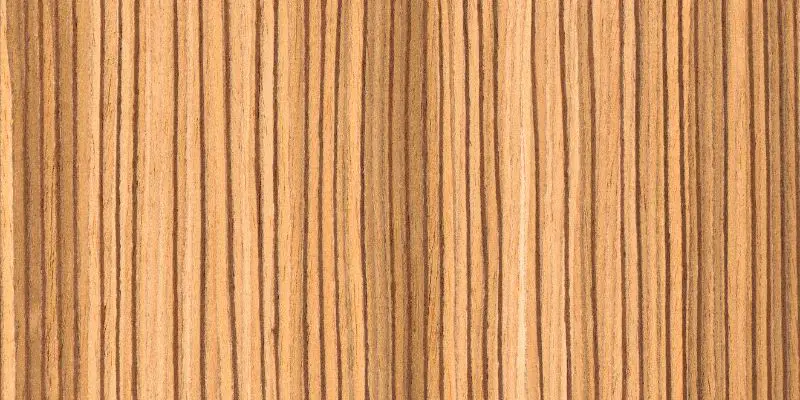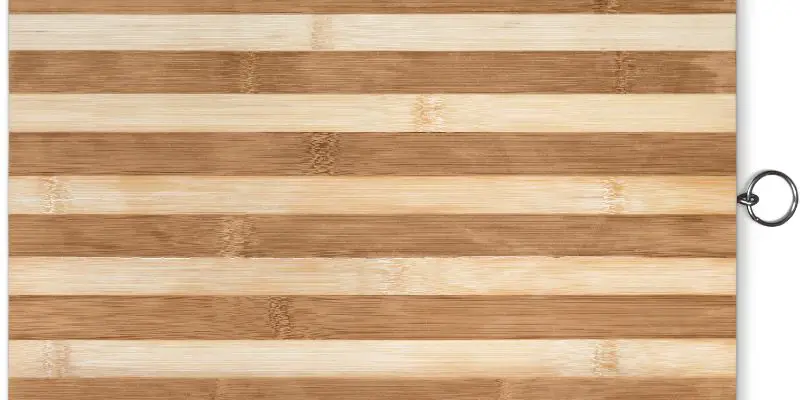Zebrawood is an excellent choice for cutting boards due to its natural resistance to moisture and durability. With its distinct striped appearance, zebrawood not only adds an attractive aesthetic to your kitchen but also provides a sturdy and long-lasting surface for cutting and chopping.
Its dense grain structure helps to prevent deep knife marks and ensures the board remains intact for years to come. Moreover, zebrawood is known for its ability to resist bacteria, making it a hygienic and safe option for food preparation.
Overall, zebrawood is a reliable and stylish material for cutting boards that combines functionality with beauty.
Pros And Cons Of Zebrawood For Cutting Boards
When it comes to choosing the perfect material for your cutting board, zebrawood is definitely worth considering. This beautiful and exotic wood offers a unique combination of benefits and potential drawbacks that you should be aware of before making your decision. In this article, we will explore the pros and cons of zebrawood for cutting boards, so you can make an informed choice for your kitchen.
Benefits Of Zebrawood
One of the main advantages of Zebrawood is its stunning appearance. This wood is named after its distinctive zebra-like stripes, which add a touch of elegance and sophistication to any kitchen. Its warm, rich tones can truly elevate the aesthetics of your cooking space, making it a focal point that sparks conversation.
Aside from its visual appeal, zebrawood also offers impressive durability. Its tight and interlocking grain structure gives it excellent resistance to warping or cracking, ensuring that your cutting board will maintain its integrity over time. This makes Zebrawood a reliable choice that can withstand the rigors of daily kitchen use without compromising its functionality.
Furthermore, zebrawood possesses natural antibacterial properties. This means that it has the ability to inhibit the growth of harmful bacteria on its surface, reducing the risk of cross-contamination while you prepare food. This can provide you with peace of mind knowing that your cutting board is helping to maintain a hygienic cooking environment.
Another benefit of Zebrawood is its compatibility with various cooking styles. Whether you’re slicing, dicing, or chopping, zebrawood offers a sturdy and stable cutting surface that allows for precise and effortless knife work. Its moderate hardness also strikes a balance between being gentle on your knives and offering enough resistance to prevent deep cuts or scratches on the board.

Potential Drawbacks Of Zebrawood
Despite its many benefits, zebrawood does have a few potential drawbacks. Firstly, zebrawood is considered a moderately expensive wood, which can make it less accessible for those on a tight budget. However, its longevity and durability can offset the initial investment, making it a worthy long-term investment for your kitchen.
Another consideration is that zebrawood can be quite dense and heavy. While this adds to its durability, it also means that it can be more prone to dulling your knives. This can be easily mitigated by using high-quality, sharp knives and regularly maintaining their edges.
Lastly, as with any natural wood, zebrawood requires proper care and maintenance to ensure its longevity. It should be routinely oiled to prevent moisture absorption and to maintain its beautiful appearance. Regular cleaning and drying after each use are also essential to prevent any potential staining or bacterial growth.
In conclusion, zebrawood offers a stunningly beautiful and durable choice for cutting boards. With its remarkable appearance, longevity, antibacterial properties, and compatibility with various cooking styles, zebrawood can elevate your kitchen experience. While it may come with a slightly higher price tag and requires proper care, its benefits make it a worthwhile investment for both amateur and professional chefs alike.
Alternative Wood Options For Cutting Boards
When it comes to choosing the perfect wood for your cutting board, there are plenty of options available on the market. While traditional maple wood is a popular choice, there are also alternative wood options that offer unique characteristics and benefits. In this article, we will explore three alternative wood options for cutting boards: Maple Wood, Bamboo, and the difference between End-Grain and Edge-Grain cutting boards.
Maple Wood
Maple wood has long been a favorite choice for cutting boards due to its durability and beautiful grain patterns. It is a hardwood that provides a sturdy and flat surface for cutting and chopping. Here are some key reasons why maple wood is a great option for a cutting board:
- Hardness: Maple wood is known for its exceptional hardness, making it resistant to scratches and knife marks. This ensures that your cutting board will last for years.
- Density: Maple wood has a tight grain structure and high density, which means it won’t absorb moisture easily. This makes it less prone to warping or cracking.
- Sanitary: The natural antimicrobial properties of maple wood help to inhibit the growth of bacteria, keeping your cutting board hygienic and safe to use.
Bamboo
Another popular alternative to consider is bamboo. Bamboo cutting boards have gained popularity in recent years due to their unique advantages:
- Strength: Despite being a grass, bamboo is incredibly strong and hard. It can withstand heavy chopping and slicing without leaving deep marks on the surface.
- Eco-Friendly: Bamboo is a highly sustainable material, known for its rapid growth and minimal environmental impact. Choosing a bamboo cutting board is a great way to support eco-friendly practices.
- Moisture Resistance: Similar to maple wood, bamboo has natural moisture-repellent properties. This makes it less prone to absorbing liquids and helps prevent the growth of bacteria.
End-grain Vs. Edge-grain Cutting Boards
When choosing a cutting board, it’s important to understand the difference between end-grain and edge-grain construction:
End-Grain Cutting Boards:
- Construction Style: End-grain boards are made by arranging the wood pieces so that the grain faces upwards. This creates a checkerboard-like pattern, with the end grain of the wood forming the cutting surface.
- Benefits: End-grain boards are gentle on knives, as the wood fibers tend to self-heal and close up after cutting. This helps to maintain the sharpness of your knives for longer.
- Durability: Due to their construction style, end-grain cutting boards are naturally more resistant to knife marks and scratches, making them a popular choice for professional chefs.
Edge-Grain Cutting Boards:
- Construction Style: Edge-grain boards are made by placing the wood pieces so that the long edges face upwards. This results in a cutting surface made up of long, continuous grain lines.
- Advantages: Edge-grain boards are generally more affordable and easier to manufacture. They still provide a stable cutting surface and can be an excellent choice for everyday use.
- Care: While edge-grain boards may be more prone to knife marks and scratches, proper care and regular oiling can help maintain their appearance and prolong their lifespan.
Whether you choose maple wood, or bamboo, or opt for the construction style of end-grain or edge-grain, each wood option offers its own unique characteristics to enhance your cutting experience. Consider your preferences and needs to select the perfect wood for your cutting board.

Frequently Asked Questions For Is Zebrawood Good For Cutting Boards
Is Zebrawood Safe For A Cutting Board?
Yes, Zebrawood is safe for a cutting board. It is a durable and dense hardwood with natural antimicrobial properties. Its unique grain pattern adds aesthetic appeal to the cutting board. However, regular oiling and proper maintenance are recommended to prolong its lifespan.
Is Zebrawood Hard To Cut?
Zebrawood is tough to cut due to its high density and interlocking grain pattern. It requires sharp tools and proper technique to prevent splintering.
Is Zebrawood Dust Toxic?
Zebrawood dust is not toxic. It can cause respiratory irritation if inhaled, so it’s important to use proper protective equipment when working with it.
What Woods To Avoid For Cutting Boards?
Avoid using wood like pine, cedar, or other softwoods for cutting boards. These woods are prone to splitting, warping, and trapping bacteria. Stick to hardwoods like maple, cherry, and walnut, which are durable and have natural antibacterial properties, making them ideal for cutting boards.
Conclusion
So, is Zebrawood a good choice for cutting boards? The answer is a resounding yes. With its unique and striking appearance, zebrawood adds a touch of elegance to any kitchen. Not only is it visually appealing, but it also boasts durability and resistance to warping.
Its tight grain structure makes it an ideal choice for chopping and slicing. Overall, zebrawood cutting boards are both functional and aesthetically pleasing additions to any culinary space. Upgrade your kitchen experience with a Zebrawood cutting board today!


